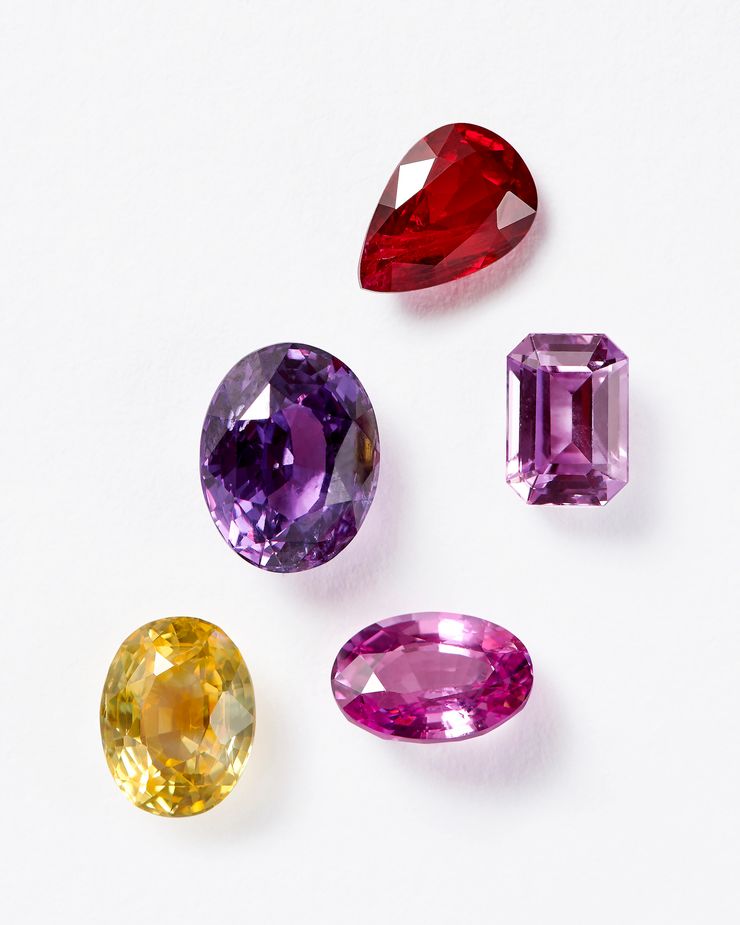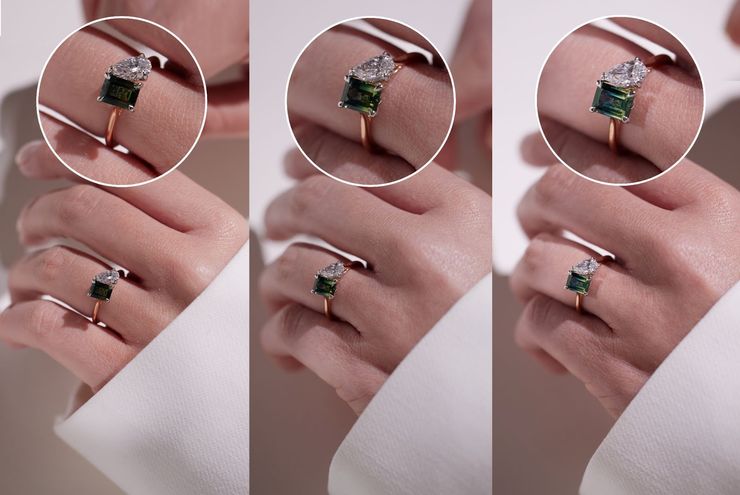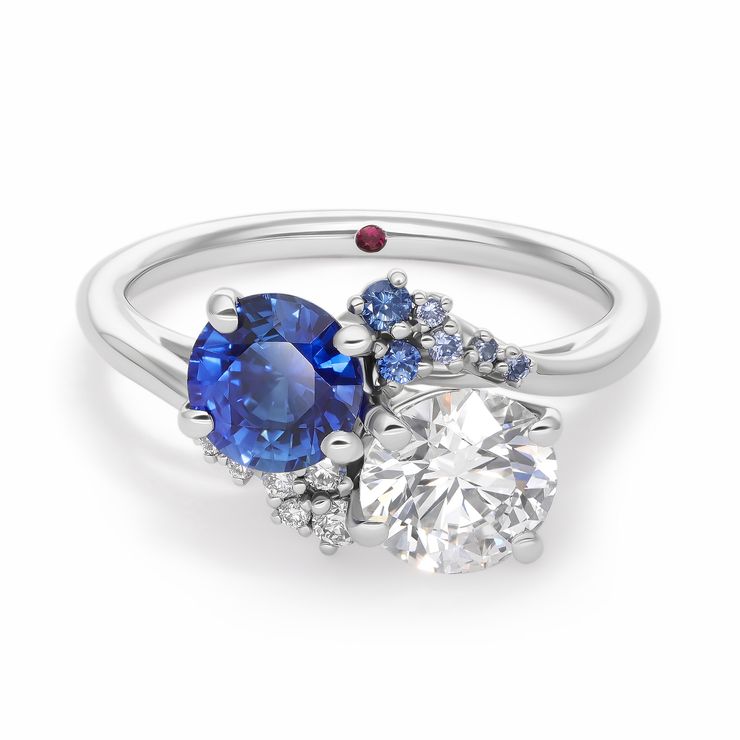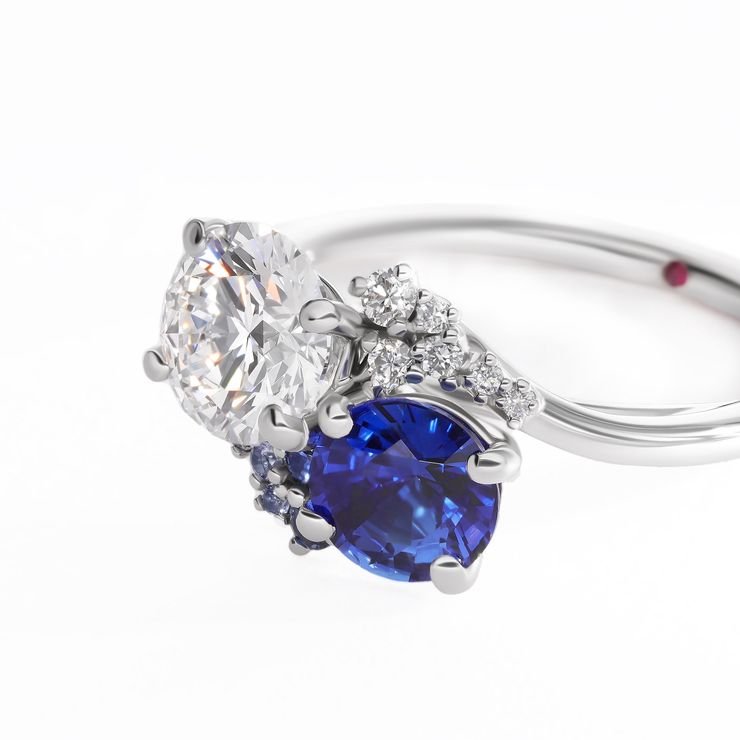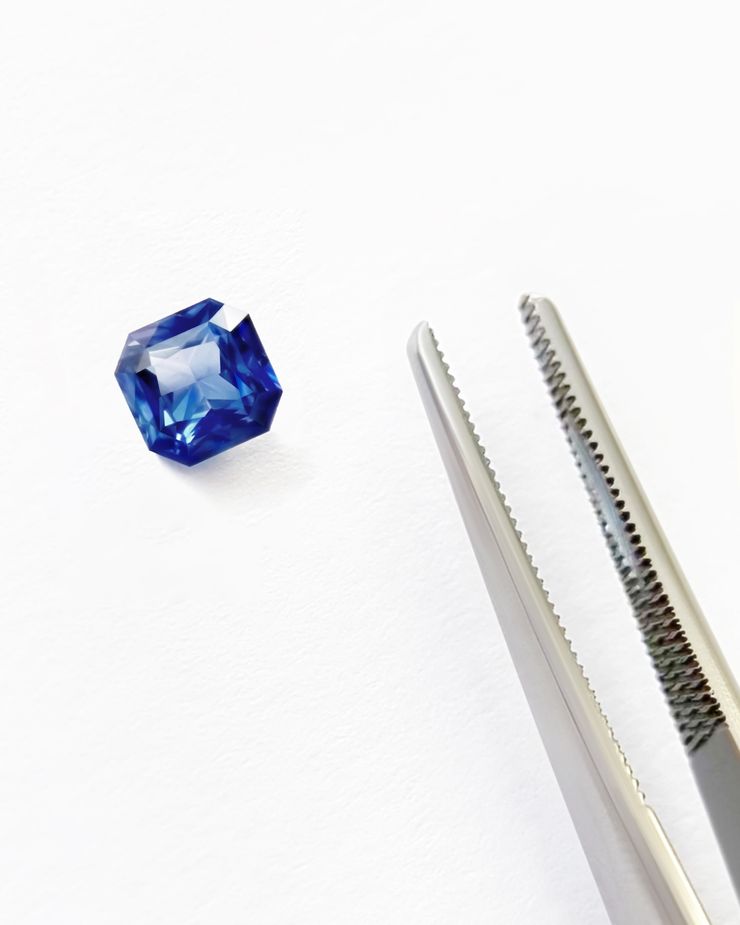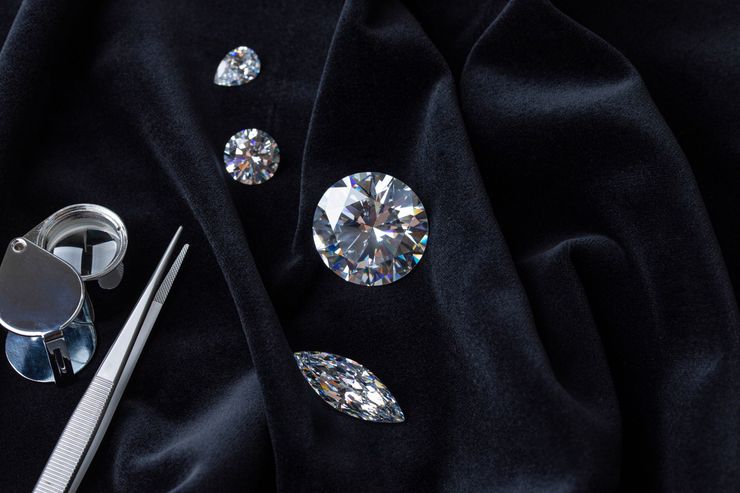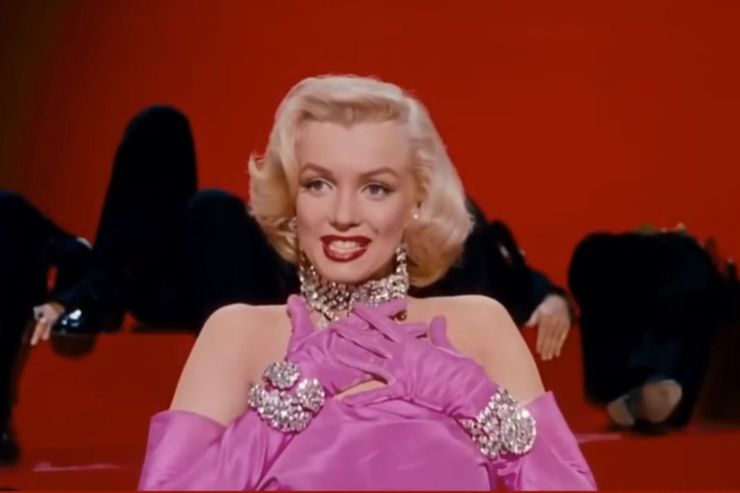The Stone Itself
So how can gemstones look so noticeably different? Gemstones can appear more lively or sleepy or simply darker or lighter depending on a whole host of factors from the stone’s cut, facet structure or inclusions to its’ colour and colour placement. There are also brilliant bi-colour gemstones which exhibit two bold colours and shift in prominence when observed under different settings.
Not only can the perception of gemstones change in saturation, but they can also go through a colour shift and switch to bordering shades on the colour wheel. For example, gemstones can alter from appearing yellow to orange or pink to red.

